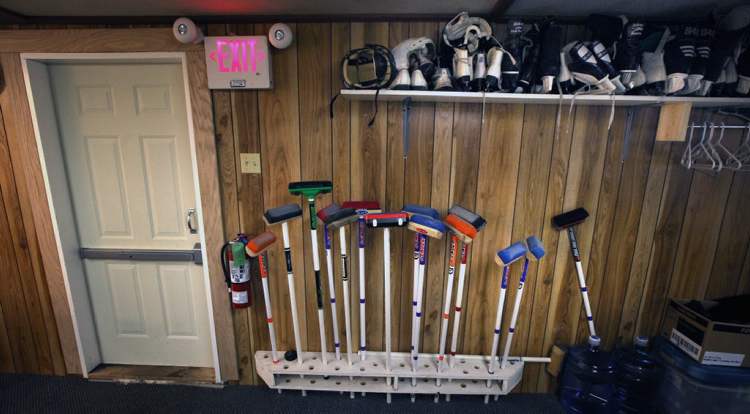On the rocks: The future of curling in rural Manitoba
Advertisement
Read this article for free:
or
Already have an account? Log in here »
To continue reading, please subscribe:
Monthly Digital Subscription
$0 for the first 4 weeks*
- Enjoy unlimited reading on winnipegfreepress.com
- Read the E-Edition, our digital replica newspaper
- Access News Break, our award-winning app
- Play interactive puzzles
*No charge for 4 weeks then price increases to the regular rate of $19.00 plus GST every four weeks. Offer available to new and qualified returning subscribers only. Cancel any time.
Monthly Digital Subscription
$4.75/week*
- Enjoy unlimited reading on winnipegfreepress.com
- Read the E-Edition, our digital replica newspaper
- Access News Break, our award-winning app
- Play interactive puzzles
*Billed as $19 plus GST every four weeks. Cancel any time.
To continue reading, please subscribe:
Add Free Press access to your Brandon Sun subscription for only an additional
$1 for the first 4 weeks*
*Your next subscription payment will increase by $1.00 and you will be charged $16.99 plus GST for four weeks. After four weeks, your payment will increase to $23.99 plus GST every four weeks.
Read unlimited articles for free today:
or
Already have an account? Log in here »
Hey there, time traveller!
This article was published 09/03/2013 (4662 days ago), so information in it may no longer be current.
CLANWILLIAM — They charge $1.50 for a piece of pie now at the Clanwilliam Curling Club. You know, inflation.
It used to be a loonie, before the curlers urged the volunteers a couple years ago to raise the price of a slice of homemade apple or blueberry or pumpkin pies by at least a quarter.
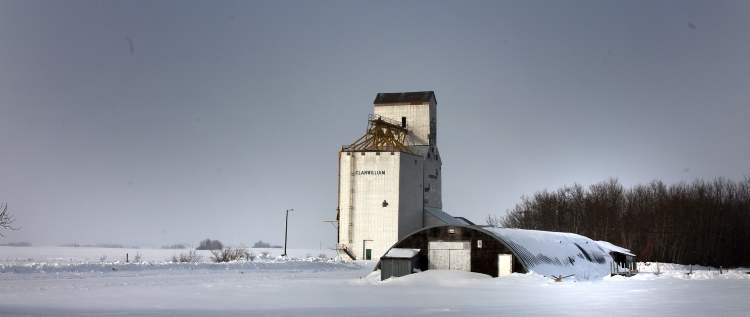
Time can stand still in places like Clanwilliam, a tiny hamlet just 16 kilometres north of Minnedosa in western Manitoba where the curling club, which looks like a giant, aluminum sardine can, lies in the shadow of a long-since abandoned elevator. There are about a dozen houses, not all of them occupied.
Yet on a recent Saturday, the curling club, all two sheets of it, was a beehive of activity. The Skins Bonspiel had eight teams participating, and the few rows of seats inside the viewing area were filled. The ladies behind the counter were serving up inch-thick cheeseburgers and the aforementioned pie.
Probably not unlike 100 years ago, when the Clanwilliam club was born.
“I’m very proud,” said Jim Richards of this town’s little patch of ice. “I enjoy the curling and the camaraderie. Some people, you wouldn’t see them if it wasn’t for the rink. It keeps the community together.”
But Clanwilliam’s modest rink is an anomaly in rural Manitoba, where the vast majority of once prosperous clubs — the beacons of social activity in many small communities — are fighting for survival in an age of depopulation and declining interest in the Roaring Game.
Two decades ago, the Clanwilliam club was on life support, with just four remaining men’s clubs. Today, there are 13 men’s teams, with participants ranging in age from seven to 83. The club volunteers recently built an addition, too, that serves as a small dining area.
Out in the prairie heartland of the game, that’s progress. But whether tiny Clanwilliam can last another 100 winters might be a long shot. Since the mid-1960s, the number of clubs registered with Curl Manitoba (formerly the Manitoba Curling Association) has fallen from around 350 to 110. Another 30 or 40 clubs still operate, but are too small in numbers to bother registering, according to Curling Manitoba president Resby Coutts.
The decline is not a secret, nor a mystery. For example, Coutts was raised in the small farming community of Elva, in southwestern Manitoba. “I grew up curling in a one-sheet rink in a town that doesn’t exist anymore,” he likes to say.
For those towns, the curling club has gone the way of the post office, the elevators, the banks and the schools. Gone, period.
However, the depopulation of rural Manitoba — the larger farms, the loss of young families — has been exacerbated, at least when it comes to curling, by a galling lack of foresight, Coutts conceded.
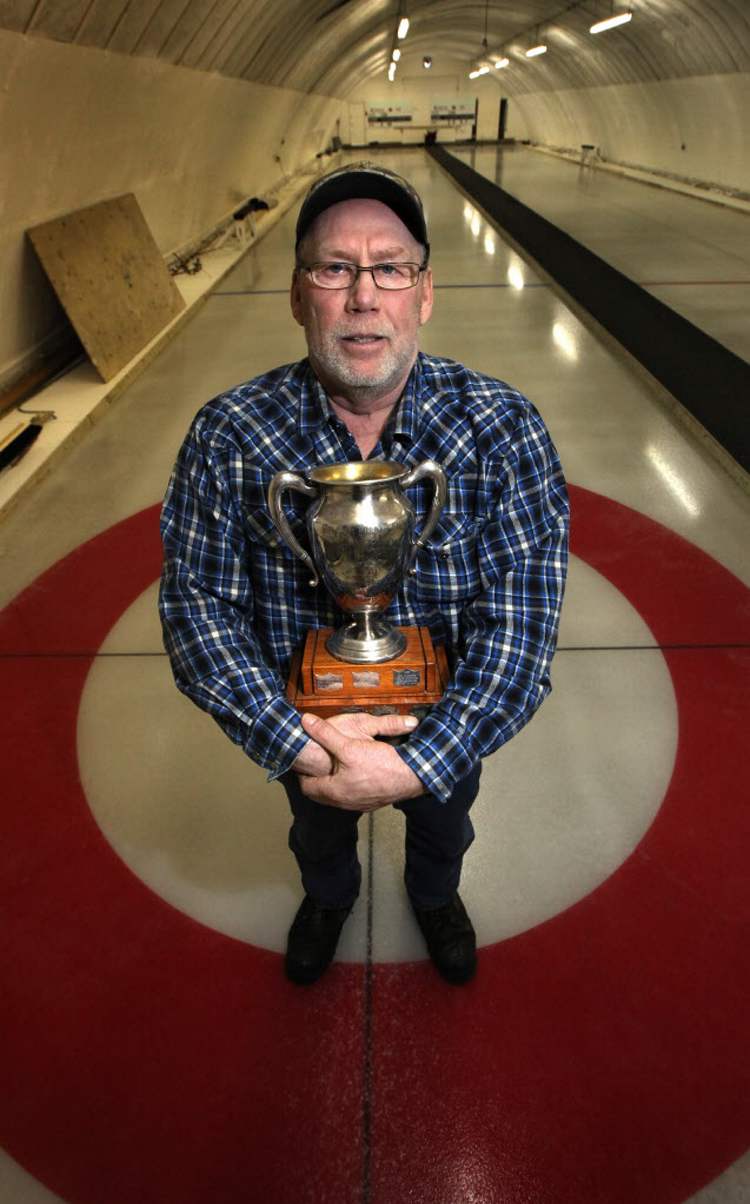
“We have come through a time of institutional arrogance,” he said. “We assumed everything was good because it was good for the last 20 to 30 years. We never started thinking until recent times that there was a problem. It worries me.”
Added Curl Manitoba executive director Shane Ray: “Manitoba was such a booming curling community we didn’t worry about (recruitment). We just assumed people would curl, right? And we lost a generation. Now we’re seeing the results in our clubs.”
Indeed, during the 1960s, ’70s and ’80s, the local curling club in a small Manitoba community was very likely more of a social hub than the town bar. The joint was jumping. Not only did parents in their thirties curl, making up the majority, but so did their young kids. Weekend bonspiels were major events.
‘Very important’ to community life
It’s not just the end of an era. For many communities it’s the end of a way of life. Since before the turn of the century, curling was a winter activity that — unlike even hockey — involved the entire community. Families curled together. Women curled in their own leagues during the day, the children curled after school and the men — mostly farmers who had put away their harvest in the fall — curled at night.
By the end of the First World War, towns began to establish clubs in earnest.
“For a good sixty years the curling club was the social and competitive centre of small towns and it served a very important purpose because at that time people didn’t go south to Arizona (or other winter destinations), they hung around in their communities,” noted Vera Pezer, a chancellor and former sports psychology professor at the University of Saskatchewan. “They had bonspiels and there were really strong rivalries between neighboring communities. It became a means for people to socialize. It was very important.”
Pezer was born in the small town of Meskanaw, population 100, in central Saskatchewan, where her father was the icemaker for a two-sheet rink. She went on to win four Canadian women’s curling championships (1969 as a third, and as a skip in 1971, 1972 and 1973) and served as a sports psychologist for Canadian Olympic curling teams in Calgary (1988) and Albertville (1992). Today, she is a member of the Saskatchewan Sports Hall of Fame and Canadian Curling Hall of Fame.
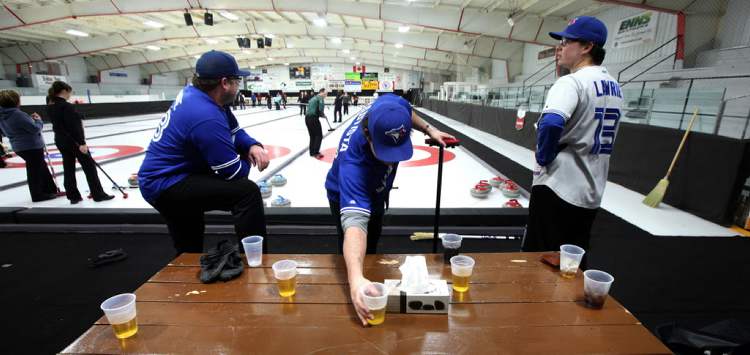
Pezer was always fascinated with the historical roots of the game and in 2004 published The Stone Age: The Social History of Curling on the Prairies, which details the role the game played beyond the bounds of basic recreation in Manitoba, Saskatchewan and Alberta.
For example, in the 1920s, not long after Manitoba’s iconic feminist Nellie McClung led the fight to establish voting rights for women in Manitoba in 1916, the local Anglican minister in Birtle advised his parishioners women should be banned from the curling club because “the on-ice atmosphere put them at greater risk of hearing men swear.”
The men voted to deny women in Birtle access to the rink— at least until those same women stormed into the next club meeting the men held in the rink.
By the time the women left, the ban had been rescinded.
Pezer said the Birtle incident was the exception, however. “It was a very democratic type of game,” she noted.
Curling identified with the times. During the Great Depression, bonspiel prizes could be goods and supplies. Said Pezer: “Often they didn’t have much food, but they could curl because it was a cheap activity. They might curl for a bag of flour from the store. It became a means to bring some fun in people’s lives when things were really desperate.”
During the Second World War, bonspiels were held to raise money for the Red Cross.
Those were the days when curlers often owned their own rocks, which they carried in boxes from bonspiel to bonspiel or left at the local rinks. They could be of varying sizes and weight, but cherished by their owners.
“These rocks were taken care of like their jewelry,” said Pezer, who inherited her first curling rock from her father.
Two-tier competitive levels
A way of life isn’t the only change in rural curling. For years, the best rural clubs could compete with the finest teams from the city. Glenboro’s Albert “Ab” Gowanlock won two Briers, the first in 1938. It was rare but not unusual for a rural team to win the provincial title decades later; Lac du Bonnet’s John Usackis in 1977, Mel Logan of Souris in 1982 and Deloraine’s Duane Edwards in 1990. So thousands of little rural kids grew up believing they could win the Brier.
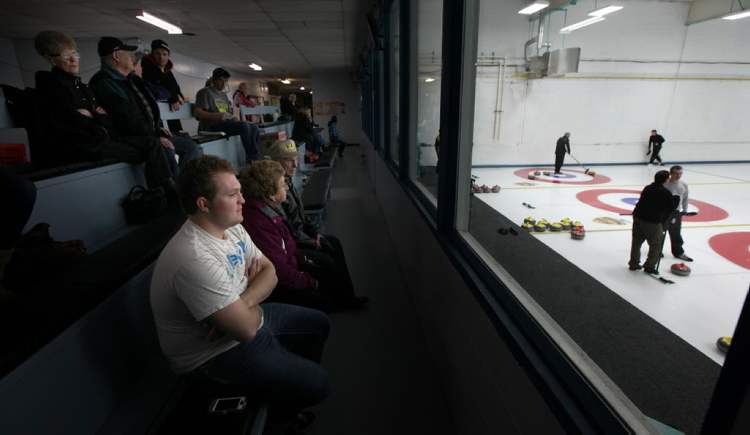
Today, however, the notion a small-town foursome could ever compete with the elite — given the evolution of curling into an Olympic sport, where top teams compete nearly full time on a national circuit of tournaments — is now more fairy tale than realistic.
Even the best rural teams made up of farmers, small businessmen or teachers, pretty much admit defeating Jeff Stoughton to win the Manitoba provincial title would be a dream. Literally.
“There’s a two-tier level in curling now,” said Rob Van Kommer, a competitive curler from Carberry who has earned seven trips to the Manitoba provincials. “There’s the Jeff Stoughton’s and Mike McEwen’s. Those teams have jobs and families that let them travel, and sponsors. They can put the time in you need to go to the Olympics. You can’t blame the guys who can pull that off. But has it hurt the game? Yes.”
But forget the Olympics. For the majority of small clubs — more and more that now sit idle in winter — just keeping the doors open is the most pressing goal.
“It’s unfortunate, but it (the game) is in trouble,” added Van Kommer, who also serves as vice-president of Manitoba curling. “It costs so much to keep the clubs open. You just don’t have the population to keep up.”
And this is coming from a guy who oversees what is unanimously considered the finest rural bonspiel in Manitoba, which this year (Feb. 18-25) attracted 100 teams, 72 men’s and 28 women’s, for the club’s 125th anniversary. There were $25,000 in prizes available.
Yet the Carberry men’s and women’s league numbers in general have been in “very strong decline.”
Even in Clanwilliam, Richards understands the local renaissance at his rink runs contrary to the surroundings.
“In the last 30 years, it’s gone down really bad in our area,” the icemaker said. “We’re hanging on. It’s alarming. It (rural Manitoba) is supposed to be the hub of curling and we’re not holding our own.
“There’s just not enough population, and the population has too many choices. It’s going to be hard to find younger people to take over.”
‘Rocks and Rings’ attracts kids
So is rural curling suffering a slow death? That’s up to the remaining curlers themselves.
In Dauphin, the numbers of men’s and women’s teams have dropped by at least 30 per cent over the last two decades — but that same decline has led to a rather dramatic development: Kid curlers everywhere.

Five years ago, local farmer Mark Hadway and teacher Gord Wood, two curling buddies, began to introduce the Rock and Rings Program (where kids can learn to curl on gym floors) at local schools. Three years ago, Hadway and Wood decided to take the next step and start an on-ice program for grades 1 to 8 students.
“The next day at the curling rink in Dauphin we had 100 kids come out,” Hadway recalled. “It was overwhelming.”
Today, there are 170 kids registered in the augustly-named Dauphin Junior Curling Academy. That compares to 110 registered in local minor hockey. It also dwarfs the number of adult curlers at the Dauphin Curling Club.
From age six, kids are taught not just the rules and techniques, but coached up on Manitoba’s stellar curling history.
“You’ve got to hook the kids somehow, right?” Hadway said. “You have to be the first through the door and dress it up. You show them you don’t have to be competitive, you can just have fun.”
Beginner courses cost just $35 for a six-week program. Grades 7 and 8 kids can sign up for a 14-week program that costs $70. The program provides brooms and sliders.
When students “graduate” from the academy, they can be integrated into the Dauphin men’s or women’s leagues by their volunteer instructors, who include a handful of high school students.
In fact, there are 16 Dauphin Regional Comprehensive Secondary School students who now take a curling course for a school credit. Yes, there’s a written curling exam in Dauphin. (Edward Schreyer High School in Beausejour offers a similar program,).
Hadway believes it’s realistic to hope that at least half the 170 kids now in the academy will become lifelong curlers who in the future will breathe new life into the Dauphin club — or wherever they end up.
The day Hadway, now 37, sees kids who are now in the academy line up against him on a sheet of curling ice, it’s “Mission accomplished.”
Wooing new Canadians
The curling community in Carberry has also been active in attracting youth. A few years ago, the Carberry club bought a set of Rocks and Rings for the local school division. The set was a hit, and the division bought six more sets, one for each school.
Carberry has a history of developing some of the top young competitive curlers in the province (recently Trevor Calvert and Joey Witherspoon) and the town club has for years stepped up to pay for entry fees or clinics for junior teams. “If they’re willing to put the time in, we made sure we looked after them,” Van Kommer said.
Curl Manitoba has also developed a “Road Show” program, where last year Reid Carruthers, the second on Stoughton’s 2011 World Men’s Curling Championship team, and Jennifer Jones’ third Kaitlyn Lawes, the 2013 national Scotties silver medallist, held clinics in nine rural clubs.
Coutts noted Curl Manitoba must also attract recent immigrants or the game will remain stagnant. “There are new Canadians all over Manitoba,” he said. “We have to reach out to them.”

For the record, Ray will argue that — despite the two-tier competitive levels — having the likes of Jones, Manitoba’s most successful female curling skip, or Stoughton vie for national titles and Olympic medals should lure more starry-eyed kids into the game. Just as Cindy Klassen’s five-medal feast, including one gold, at the 2006 Turin Winter Olympics, spawned a boom in local speed skating numbers.
The trick, of course, is to keep them in the hack.
“We’ve recognized that fact,” Ray noted. “We’re going after way more kids and youth programs to get more kids involved in the sport. If the kids see Jeff Stoughton going to the Olympics, hopefully, they’ll think they can do it.”
But, again, there are gold-tinted dreams. And there’s reality.
Some curling organizers wonder if it the game might have to return to its roots — when rinks like Carberry and Clanwilliam first opened (1888 and 1914, respectively) and there was no Brier. No World Curling Tour. No Olympics. And the only object was to socialize with friends and neighbours. Hit the button. And, perhaps, eat a little pie.
“Curling was a gathering of good people and fun,” Van Kommer said of the sports heydays in the Canadian heartland. “Maybe have a drink. It’s a great sport for friends and meeting people.”
It used to be that curling was marketed as “the sport that could last a lifetime.” But not if the local rink closes.
At Clanwilliam, they can’t predict the future. But Liz Davies, who emigrated to the region from Wales 10 years ago and took a shine to the game, doesn’t like the thought of the town’s two-sheeter closing.
Standing behind the counter where they sell pie for $1.50, Davies said, “It would be a long winter.”
randy.turner@freepress.mb.ca

Randy Turner
Reporter
Randy Turner spent much of his journalistic career on the road. A lot of roads. Dirt roads, snow-packed roads, U.S. interstates and foreign highways. In other words, he got a lot of kilometres on the odometer, if you know what we mean.
Our newsroom depends on a growing audience of readers to power our journalism. If you are not a paid reader, please consider becoming a subscriber.
Our newsroom depends on its audience of readers to power our journalism. Thank you for your support.


